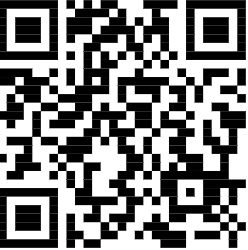AR - Civilisations BBC
- Jeremy Segal
- Mar 29, 2023
- 2 min read
Updated: Apr 12, 2023
Changes: Updated limitations, fixed grammar, and refined the originality post

Although seeming futuristic, applying digital content to real-world environments through a smart device can significantly enhance educational possibilities for students. Augmented Reality (AR) allows virtual and real objects to coexist simultaneously in the same space. This enables students to manipulate realistic versions of digital multimedia, enhancing understanding, engagement and cognitive processing of stimuli, increasing evaluating and analytical analysis (Bower et al. 2014).
Civilisations AR and Pedagogies
Demonstrating Civilisations AR's capabilities through Zappar.io
CC BY 2.0 JEREMY SEGAL
Civilisations AR is a free application to display historical artefacts and figures to manipulate and analyse while reading the blurbs to understand the historical contexts of that time.
This fantastic application utilises constructivism pedagogies and experiential learning, allowing students to be fully immersed and experience historical objects within its accurate scale.

Experiential pedagogy allows students to actively reflect upon their observations to create and solidify their understanding while segmenting experiences within long-term memory (Dalgarno & Lee, 2009). Through this application, students can analyse, evaluate and appreciate history by comparing and contrasting artefacts with modern items while analysing their uses (Agius & Daylamani-Zad, 2021).
Limitations However, this application may not engage students due to the limited interactivity and personalisation that other technologies provide. Furthermore, this application requires a large open area with good internet, which is problematic in rural schools and if multiple students utilise this technology simultaneously.
Fostering Creativity
Through Civilisation AR's ability to manipulate historical artefacts within surrounding environments, students can creatively analyse and evaluate their effectiveness compared to similar modern objects (Qu et al., 2020). This can significantly enhance creativity while completing history outcome ACHHS035 as Stage 1 students must critically observe the design and functionality of historical objects and how they can be utilised for different functions (NSW Education Standards Authority, 2021). For example, after adjusting the lighting, I have creatively chosen ancient household artefacts and analysed where the correctly scaled objects would fit in a modern setting while comparing against modern variations. With this, I can draw comparisons about how the functionality of objects has changed and improved over time.
Students can manipulate objects to function suitably while comparing them against their modern counterparts. CC BY 2.0 JEREMY SEGAL
References Agius, H., & Daylamani-Zad, D. (2021). Guest editorial: Interaction in immersive experiences. Multimedia Tools and Applications, 1(1). https://doi.org/10.1007/s11042-021-11306 Bower, M., Howe, C., McCredie, N., Robinson, A., & Grover, D. (2014). Augmented Reality in education cases, places and potentials. Educational Media International, 51(1), 1–15. https://doi.org/10.1080/09523987.2014.889400 Dalgarno, B., & Lee, M. J. W. (2009). What are the learning affordances of 3-D virtual environments? British Journal of Educational Technology, 41(1), 10–32. https://doi.org/10.1111/j.1467-8535.2009.01038.x NSW Education Standards Authority. (2021). Outcomes | NSW education standards. NSW.edu.au. https://educationstandards.nsw.edu.au/wps/portal/nesa/k-10/learning-areas/hsie/history-k-10/outcomes Qu, C., Zhao, T., & Ding, W. (2020). A narrative environment model for the sustainability of intangible cultural heritage under the 5G era. Advances in Intelligent Systems and Computing, 1(1), 136–142. https://doi.org/10.1007/978-3-030-62746-1_20














Hi Jeremy. Good photos up there! You make a good description of the app and is a interesting applicaion that of comparing with real objects. I must say that I am skeptical with this app. In the tutorial, when I tried it, I found it a bit slow and unsatable on showing the 3D image, as well that the way that it shows the information of the objects is not that intercative. However after reading your blog I do think that it can be functional as a intrpductory activity for first graders no mattering that is not the great and engagign tool.
Regards.
Álvaro Pérez.
Hi Jeremy,
I really enjoyed reading your blog post, I found it fascinating. You provided a great definition of AR and how it enhances educational possibilities. I like how you have included that it uses a constructivist and experiential pedagogy as well as outlining its limitations. In the future, it would be helpful if you could have included the syllabus outcome, stage and what class activity you could use this technology in as this would be helpful for teachers looking to implement this technology in their classroom. Overall, your blog post is really well written and researched. Well done.
Thanks,
Gemma Gold
46473009